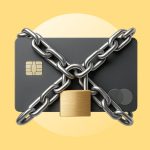Investing in mutual funds is one of the easiest ways to diversify your portfolio without having to determine which individual stocks and bonds to buy or sell.
However, it’s important to understand that certain mutual funds come with what’s called a sales load. When creating a portfolio, understanding the difference between load vs. no-load funds is important — and can help boost your returns.
Load funds
A mutual fund that comes with a load is one that charges a sales fee. In general, a sales fee is charged as a percentage of the amount you invest and can be charged either when you purchase shares (a front-end load) or later, when you redeem them (a back-end load), explains Jonathan Bednar, CFP, with Paradigm Wealth Partners. There are also loads that are charged each year, known as level loads.
Types of load funds
When reviewing your choices, Bednar says, mutual fund companies often label shares based on the type of load:
- Class A shares: Front-end loads, with lower costs
- Class B shares: Back-end loads, with higher costs than Class A shares
- Class C shares: Level loads, with higher costs than Class A shares, spread out to make up for the fact that there aren’t commissions during purchase or redemption
These sales charges reduce your real returns, based on how high they are. Front-load funds might charge as much as 5.75 percent, according to Julian Morris, CFP, principal of Concierge Wealth Management. He also points out that the more money you have with a mutual fund company, the smaller the fee might be. Back-end fees can vary, but Morris says they are generally more if you redeem your shares within a year of purchase.
It’s also important to note that mutual funds might charge other fees, like 12b-1 fees, that pay for the costs of marketing and sometimes provide services to shareholders.
No-load funds
If you’re not interested in paying a sales load, however, you can find mutual funds that don’t charge these fees, says Morris.
“No-load funds are typically offered by large-fund supermarkets like Fidelity and Vanguard,” says Morris. “If you’re buying from a company, you might be a do-it-yourself investor and the fund company receives compensation because you’ve bought the fund, or you have money in other accounts, so they don’t charge sales fees.”
Bednar points out that many no-load funds are index funds and passively managed. He also adds that some of these mutual funds still charge fees.
“The Securities and Exchange Commission allows a no-load fund to charge a 12b-1 fee as long as it doesn’t exceed 0.25 percent,” says Bednar.
Load vs. no-load funds: Which is better for you?
For the most part, whether load vs. no-load funds is better depends on your individual situation and goals. The best mutual fund is the one that helps you meet your investment objectives. But paying a load seriously hurts your potential returns, and you can get the same performance or better by using low-cost no-load funds. So there’s no reason at all to pay more.
Morris points out that no-load funds are generally less-expensive choices for do-it-yourselfers interested in making their own choices. Additionally, because they aren’t actively managed, index investors tend to like using them in a long-term portfolio, Bednar says.
On the other hand, Bednar notes that some load funds come with an active style of investment that can complement your goals. Finding a fund that is hyper-focused on a specific niche or that can potentially provide you with more growth can be worth the cost of the sales fees. But now many exchange-traded funds (ETFs) also offer niche funds without a load.
Morris also points out that there are ways to get help choosing funds by using an advisor that offers no-load funds or funds that waive commissions and other costs.
“Some advisors offer wrap programs, which allow you to simply pay a percent of assets managed,” Morris says. “This can be the best of both worlds.”
In a wrap program, the fee is based on your total assets being managed by the advisor, and the program typically includes financial advice and discounted sales loads.
However, Morris warns, it’s important to make sure you’re working with a fiduciary who will put your interests first and disclose any conflicts of interest.
With similar or better performance available in no-load funds, investors should steer clear of sales loads whenever it’s possible – and it almost always is possible.
Bottom line
A mutual fund with a sales load, whether it’s the front end, back end or level, comes with extra costs that no-load funds don’t have. However, even if you choose a no-load fund, there are still going to be some costs. Pay attention to those costs and understand how they can impact your overall real returns. Paying a sales load immediately lessens your potential return, and makes it even harder for those funds to outperform their no-load counterparts.
Why we ask for feedback
Your feedback helps us improve our content and services. It takes less than a minute to
complete.
Your responses are anonymous and will only be used for improving our website.
Help us improve our content
Read the full article here
















